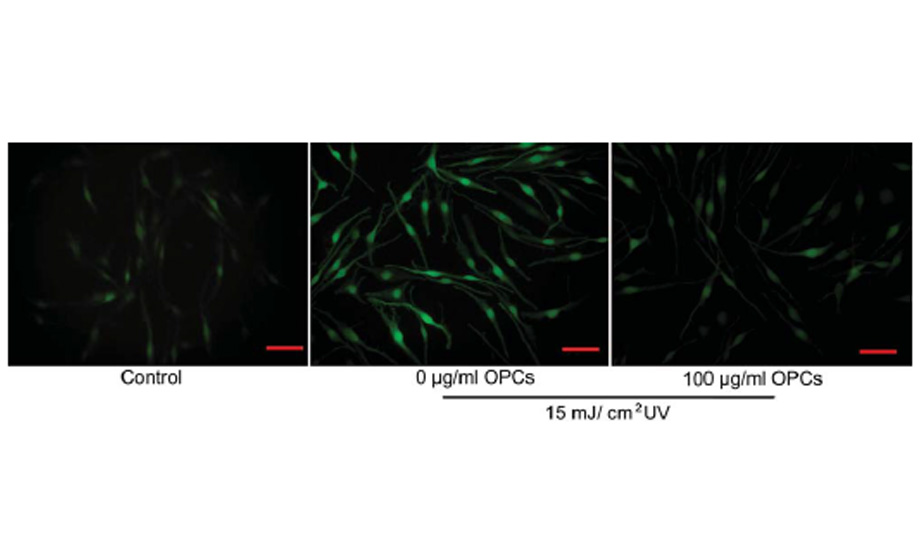Oligomeric proanthocyanidins from grape seeds effectively inhibit ultraviolet-induced melanogenesis of human melanocytes in vitro
SHAO-XIA ZI 1,2*, HUI-JUN MA 2*, YOU LI 2, WEN LIU 2, QING-QI YANG 2, GUANG ZHAO 2 and SHI LIAN 1
1 Department of Dermatology, Xuan Wu Hospital, Capital Medical University, Beijing 100053;
2 Department of Dermatology, The Airforce General Hospital of the Chinese People’s Liberation Army, Beijing 100036, P.R. China
*Contributed equally
Abstract
Abstract. The oligomeric proanthocyanidins (OPCs) from grape seeds are expected to be novel and potent anti-oxidants that more effectively protect skin cells against oxidative stress. UV-induced oxidative stress is considered to promote melanogenesis and serious skin damage. However, the effect of OPCs on UV-induced melanogenesis is still unknown. To investigate the role of OPCs on mleanogenesis of human melanocytes with UV exposure, we evaluated the effects of melanogenesis, cellular cycle, intracellular reactive oxidative species (ROS) level and protein level of melanogenic enzyme in cultured human melanocytes following UV-irradiation by OPCs. After treatment with different doses of OPCs or L-ascorbic acid, normal human melanocytes (NHM) were irradiated by 15 mJ/cm2 UV light. Then, cellular melanin content, activity of tyrosinase were examined. Moreover, the protein analysis of tyrosinase, tyrosinase related protein 1 (TRP1), and tyrosinase related protein 2 (TRP2) were observed by Western blotting. Levels of UV-induced ROS in melanocytes
and the responses of cell cycle were also examined by immunofluorescence techniques. This study demonstrated that OPCs, significantly inhibited the cell dead induced by UV irradiation in a dose-dependent manner and OPCs alone, has no effects on melanogenesis of NHM, however, it significantly inhibited UV-induced melanogenesis in a dose-dependent manner. The UV-induced intracellular ROS enhancement was also prevented by addition of OPCs in a dose-dependent manner. Meanwhile, OPCs also inhibited the extent of G1 arrest that was induced by UV exposure. OPCs can decrease the protein level of tyrosinase, TRP1 and TRP2 in UVirradiated NHM. Thus, OPCs have potential effects of photoprotection on human melanocytes by improving cell viability, scavenging intracellular ROS, adjusting cell cycle and inhibiting protein expression of melanogenic enzymes. (…)







